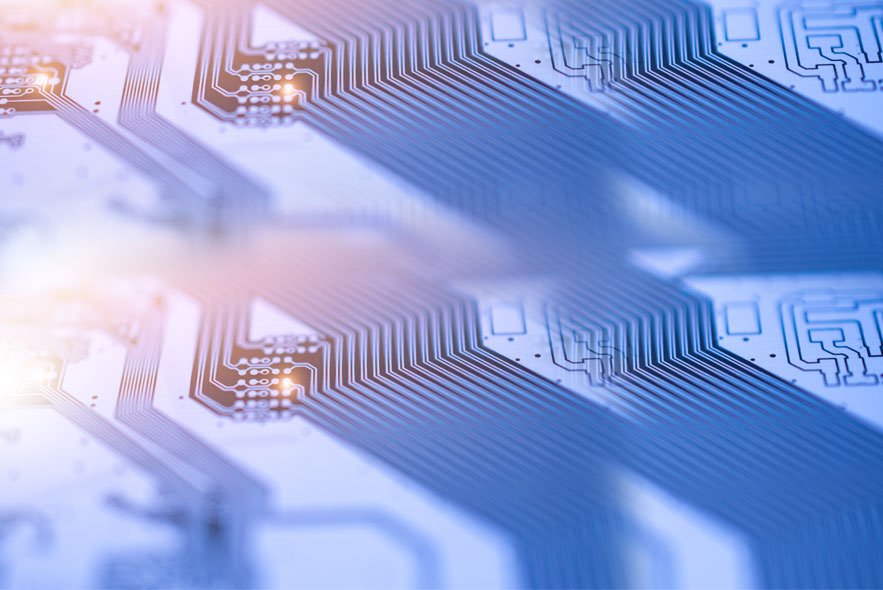
people analytics (HR analytics)
What is people analytics (HR analytics)?
People analytics, also known as human resources (HR) analytics and talent analytics, is the use of data analysis on candidate and employee issues to understand their effect on business goals and evaluate the effectiveness of HR initiatives. Ideally, people analytics leads to better data-driven decision-making.
People analytics focuses on the people, challenges, functions, processes and opportunities at a workplace. The analysis process applies math, statistics and modeling to candidate- and worker-related data to see and predict patterns in all aspects of acquiring and managing employees.
Using people analytics, HR departments can work alone or with data scientists to gain insights into areas such as talent pipeline issues, the effectiveness of retention efforts, employee performance and workforce productivity, and assess which wellness and learning programs are working.
Why is people analytics important?
Implementing people analytics can help business leaders and HR departments make data-driven decisions that can improve employee potential and work results.
People analytics can help organizations in their recruiting, performance management, compensation, succession planning and retention efforts. They can help organizations understand which candidates to hire, which employees are the highest performers, who's receiving adequate compensation and how employee retention can be improved. People analytics can also support gut instinct, for example, by providing evidence that a person with a community college certificate sometimes makes a better employee than someone with a four-year degree.
Having an analytics process in HR can also help organizations identify less productive tasks that could be automated, giving employees time to work on more valuable tasks.
People analytics can also help reduce employee turnover and improve the employee experience. People analytics identifies metrics that affect employee performance and productivity, enabling the organization to make changes to the workplace that help employees.
How is people analytics used?
The use of predictive analytics in people analytics is an important trend. It can help predict skill gaps, spot candidates who are high performers and identify employees who may be at risk of leaving. Sales organizations use people analytics to predict and address poor performance in salespeople, and hospitals use it to understand how patient outcomes are affected by employees. Organizations can create new opportunities for revenue by examining customer and labor data as well as enable profit growth by analyzing workforce spending.

Vendors are developing tools to expand the use of analytics. Companies might look to vendors rather than build their own tools because analytics models now use sophisticated technologies such as artificial intelligence (AI).
People analytics is also increasingly expected to analyze teamwork and organizational relationships, which could take on heightened importance as companies replace hierarchical models with more collaborative ones.
The process of people analytics
The process of implementing people analytics should address the following steps:
- Step 1: Create a simple, well-defined plan. People analytics processes should be straightforward and relevant to business goals. For example, the process of data analysis and interpretation should be understandable and easy to update. Data gathered should represent metrics that provide insight into business goals.
- Step 2: Choose a people analytics tool. People analytics platforms typically come with data-centric features such as data mining, data transformation and data visualization.
- Step 3: Collect the right data. Collected data should be relevant to achieving business goals. For example, if the goal is to increase employee competency, then metrics such as training expenses and effectiveness should be gathered. Collecting the right data should enable an organization to save resources by analyzing only the necessary areas.
- Step 4: Adhere to legal policies. Employees should still maintain their privacy. Have an internal legal team validate any data collection processes. In addition, any metrics should be measured for transparency.
Important HR metrics to measure
HR metrics help to track the effectiveness of HR initiatives and the effects of talent management trends on business strategies and financial results. Some examples include the following:
- Absence rate or absence rate per manager.
- Average cost per hire, including training costs.
- Benefits participation rate.
- Cost of HR personnel per employee.
- Diversity.
- Compensation.
- Employee engagement.
- Overtime expenses.
- Retention rate per manager.
- Revenue per employee.
- Training effectiveness.
- Turnover rate.
One point of confusion could be the difference between HR metrics and HR analytics. In essence, metrics describe concrete measures of past performance, while analytics use those measurements to gain insights or predict future patterns. Metrics typically describe concrete data points, such as how many candidates applied or how many employees left the company, while analytics answers questions such as what educational background best helps indicate future high performers or why top performers are leaving.
Benefits of people analytics
HR departments are expected to incorporate employee data analysis into their daily routines because of its potential to improve HR effectiveness and business outcomes. The possible benefits of using people analytics are indeed significant and include the following:
- Saves time. Sourcing, hiring, training and nurturing employees can be time-consuming and doesn't always directly support strategic objectives. People analytics enables HR team members to focus on the people and programs that will be most beneficial, allowing the HR department to spend more time on actions that will drive bigger results for the company at large.
- Improves productivity. Particularly as more employees work from home, people analytics can be applied to data from employee engagement surveys to help companies understand what keeps workers engaged or what gets in their way. HR analytics can also be used to understand health trends and absenteeism issues.
- Improves employee experience. An employee's feeling of belonging within the company is often correlated to their morale and productivity. People analytics can enable HR -- and data scientists working with HR -- to determine what employees want and need, thus creating a better social and work environment.
- Improves retention. The potential of people analytics to improve employee experience can, in turn, improve retention. Analytics can inform recruiters on the HR team of the reasons for employees' negative feelings while also revealing why employees stay with the company. These analytics can help organizations identify skills gaps within the team and work to fill them in an effort to make the team members happy and keep them at the company.
- Creates actionable insights. Using data visualization with people analytics helps provide employees with results they can understand. Because employees can see and comprehend their performance data within the greater context of strategic business objectives, they know where to adjust their performance, and a stronger sense of ownership provides the incentive to do so.
- Strengthens decision-making. Data analytics provides facts that organizations can use to inform and empower their decision-making process. Using employee data, people analytics enables HR departments to make decisions that are less subjective and emotion-based and, instead, are more reliant on the statistical likelihood of success.
Potential pitfalls of people analytics
HR data management is still a major concern because HR data is often siloed, incorrect, out of date or inconsistent, but there are other significant pitfalls, such as the following:
- Technology-first focus. People analytics initiatives frequently fail because business leaders and organizational stakeholders take a technology-first approach instead of focusing first on the business or people issue to be solved and how it relates to improving business outcomes.
- Data quality issues. People analytics often relies on data in different HR systems to uncover insights. Small variations in the way data is rendered or incorrect inputs can cause incorrect analyses. The larger the organization is and the more systems it uses, the more profound this issue becomes.
- Internal resistance and distrust. Helping HR staff and other business users understand how to work with and accept analytics can be problematic. Workers might distrust why data is being collected and fear it's being used against them. The issue could worsen in times of crisis or as more tools are used to monitor employees' performance.
- Bias. The ability of AI to notice a pattern to determine future actions means it can be used to continue biased behaviors, such as hiring or promoting only one race or gender. Another example of bias is the potential negative influence of predictors that suggest someone is likely to leave the company, and managers mistreating the employee based on that. HR departments must understand the basis and underlying assumptions of people analytics to prevent such biases from happening.
- Legal and compliance issues. Because behavioral, health data and other sensitive information can easily be used to discriminate against employees, HR analytics opens up major areas for potential abuse. HR and legal must work together to ensure compliance, and executives, managers and HR must understand which behaviors are illegal.
Top people analytics trends
Current trends in people analytics include the following:
- A focus on employee engagement. Organizations can use analytics tools to gain further insights into what motivates employees as well as factors that further engage or disengage them. Focusing on employee engagement can improve employee morale by identifying where employee engagement is lacking and trying to improve it. This can also lead to improved employee retention and productivity.
- Improved data visualization and predictive analytics. With an increase in data visualization and predictive analytics, HR teams can identify trends in data easier, making insights less challenging to gather.
- The use of AI. AI enables organizations to analyze much more data within a smaller amount of time while maintaining a high level of accuracy.
- The use of real-time data. Using data gathered in real time provides the most up-to-date data and metrics, which enables more informed decision-making.
- The use of sentiment analysis. Sentiment analysis helps identify employee opinions toward their organization or job.
The evolution of people analytics
HR analytics was the initial term used to describe the measurement of human resource programs and their effectiveness. It was performed in HR data warehouses. HR analytics has its origins in industrial psychology studies to optimize production and in thought leadership, such as that represented in the 1984 book How to Measure Human Resources Management, written by Jac Fitz-enz. The term HR analytics came into wider use as software providers increasingly offered what they called HR analytics tools.
Prior to the 1990s, HR was mostly reactive in its workflow, as it could only give advice based on past experience or working knowledge. As time went on, methods for HR to be proactive, such as by analyzing employee behaviors and productivity, were developed. Other terms also came into use -- such as people analytics, talent analytics and workforce analytics -- that are often used synonymously today.
However, workforce analytics tends to be somewhat distinguished from the others, referring to both the macro elements of HR strategy -- for example, the effect of changing demographics or issues surrounding skill gaps -- and more narrowly focused workforce planning issues, such as the staffing needed for a particular region or labor costs and productivity.
In recent years, the people analytics market has experienced rapid growth in vendors, users and revenue, reflecting its importance to HR departments and the organizations they serve. This predicted continued growth also reflects the focus on employee experience as organizations struggle to better satisfy workers.
Learn more about the benefits and use of real-time data in HR and people analytics.






